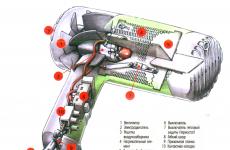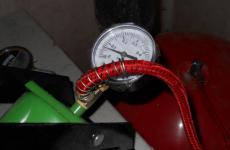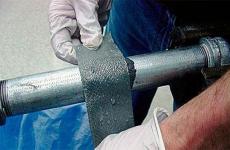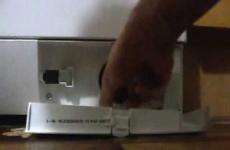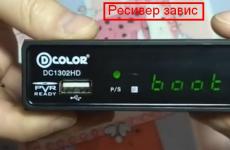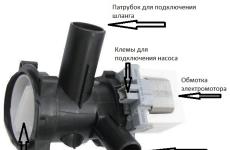TV Antenna Signal Amplifier
Quite often in the comments, answering questions about the "crumbling" picture or periodically disappearing, one has to explain that the main reason for such distortion is a weak signal. Its own antenna gain is responsible for its level, if it is passive or, if active, an antenna amplifier for digital television DVB T2.
The issue of increasing the signal level is being resolved by replacing the amplifier with a more powerful one, that is, with a large gain (dB), for active antennas with the possibility of changing it. Passive antennas, both external ones, need to be replaced, or an additional TV antenna signal amplifier must be installed. Let's start with the passive ones.
Installing the amplifier on a passive antenna
Responsible for the level of the output signal, as already mentioned, its own antenna design and it is not possible to change it. The problem can be solved by installing an additional antenna amplifier for digital television on the cable.
They can be divided into two types:
- powered by 12 volts;
- with a power supply of 5 volts.
They can also be divided into two more types;
- broadband;
- range.
Broadband antennas include antennas with gain in both the meter and decimeter ranges with frequencies of 47-862 MHz. Band, amplify the signal in one sector, in this case decimeter with frequencies of 470-862 MHz, on which DVB T2 digital television is broadcast (DVB T is an outdated standard).
Below are the dvb t2 Locus LA-32U digital television signal amplifier. You can draw a conclusion about this by marking. The 5 volt power supply allows it to be powered directly from the set-top box.
Signal amplifier dvb t2 signal amplifier locus LA-32U
The amplifier is made in a housing with F-type connectors, for easy installation in the cable cut.
Locus LA-32U specifications:
- Gain - 20 dB;
- Noise - 2.5 dB;
- Food - 5 c.
The second amplifier, Sanor AMP-22V5, refers to broadband. Do not be confused by the DVB T inscription, the frequency plays a role here, not the broadcast standard.

Feature of Sanor AMP-22V5:
- Gain - 20 dB;
- Noise - 2.5 dB;
- Food - 5 c.
I will give another dvb t2 signal amplifier with a 12 volt power supply - this is the AMP101 from GAL with a 20 dB gain.

Such a signal amplifier for a television antenna can be used both in urban and suburban environments, for example, in a country house, in cases where it is necessary to slightly raise the signal quality without changing the antenna itself.
Amplifiers for active antennas
The most common of these are SWA amplifiers. Such antenna amplifiers for digital television dvb t2 are basic for the so-called "Polish" antennas or "arrays".

No matter how scolded this amplifier, but when received at long distances, it shows itself perfectly, the main positive qualities are it withstands close lightning discharges. But SWA555, SWA777 proved to be extremely negative. They fail not only from a thunderstorm, but just like that.

They are powered by 12 volts from a separate power supply.
LSA amplifiers were produced for the repair of Locus antennas. The main reasons why they fail are a lightning strike, a malfunction of the power supply and sometimes a violation of the tightness of the case. When moisture enters the amplifier, the conductive paths are destroyed and it fails.
Considering that Delta antennas with an amplifier are similar to Locus antennas, these amplifiers were installed on them as well.
How to connect an antenna signal amplifier
Install such amplifiers in the immediate vicinity of the antenna or at least no further than 3 meters from it if the antenna is outdoor. This is done in order to avoid amplification of noise arising in the cable.
If you have an indoor decimeter antenna, the amplifier can be installed right next to the TV.
You can connect the amplifier to the antenna with special F - connectors. They are wrapped around the ends of the cut cable, and the signal amplifier t2 is connected to them.

In the case of a room antenna, it is better to purchase half a meter of cable, then connect it to the TV through the plugs and connectors. Amplifiers combined with a power supply unit of the USSH -1A indoor type are also available for sale.

This device should not be installed in conjunction with an active antenna.
Homemade amplifier
For those who are fond of radio electronics and like to design with their own hands, you can make an amplifier yourself. There are plenty of such schemes on the Internet. A description of how to make an amplifier for an antenna with your own hands will be in another article.
I would only like to note that it is necessary to achieve not only good gain, but also that the amplifier has the lowest possible noise level. This is achieved by using high-quality parts and minimal dimensions.

